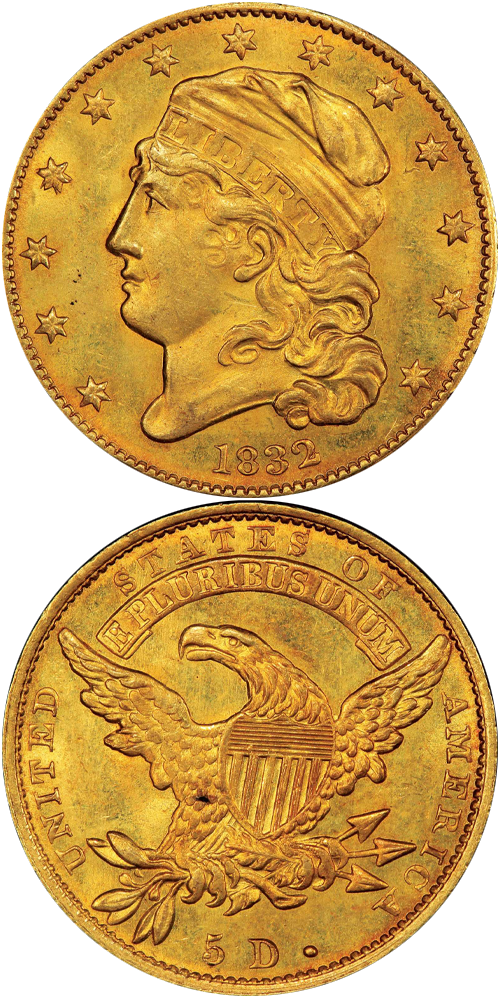1832 Capped Head Left Half Eagle
13 Stars
The raw gold for the 157,487 half eagles coined in 1832 came from a wide variety of sources. The vast majority of the gold came from the mines of the gold regions of Georgia and the Carolinas, $678,000 worth according to the 1832 Mint Report. Another $80,000 was said in the same document to have come from "Mexico, South America, and the West Indies," some of which came overland via Missouri. Portions of the Santa Fe Trail had existed for centuries, but it was first blazed by Anglo-American traders in 1821, when a debt-ridden Missourian named William Becknell had little to lose and set out for a trading expedition to the Spanish cities of New Mexico. In the meantime, word reached New Mexico that Mexico was now independent from Spain. Whereas Zebulon Pike was arrested when he crossed into Spanish-held territory in 1806, Becknell was welcomed, then sent home with bags full of specie. Word of his trading success spread, and by the early 1830s hundreds of men set out for New Mexico annually, via Kansas and southern Colorado. Access to the Missouri River put Columbia and Westport, near Independence, within reach of New Orleans and the world beyond.
Mexico's independence increased the trade between the United States and the former Spanish territory. It was easier to transact business with New Orleans and the east coast of the United States than Europe, and the flood of specie that followed was one of the primary reasons for placing a branch mint in New Orleans. The specie that came from Charles Bent's 1832 caravan to New Mexico totaled $100,000, an incredible sum. J. Coleman Boggs, a trader whose brother was then Lieutenant Governor of Missouri Territory, got the honor of reporting the trade mission's success to the Secretary of State.
John Dannreuther has estimated that between 40 and 50 specimens of this issue have survived in all grades.
The example to the left was sold by Stack's Bowers Galleries in the D. Brent Pogue Part IV Auction, where it realized $105,750.






